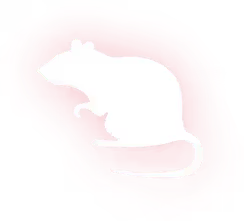

Drain Fly Removal in Hudson, TX
Reliable drain fly removal in Hudson, TX from Spot On Pest Control, LLC. Eliminate pests at the source. Contact us today to book your expert service.

Drain fly infestations are a common nuisance in Hudson, TX homes and businesses. These small, fuzzy moth-like insects thrive where organic matter and standing water meet: sink and floor drains, grease-clogged traps, sump pits, and compromised sewer lines. Left untreated, drain flies multiply quickly and create constant annoyance while indicating underlying sanitation or plumbing problems. This page explains how drain fly infestations are diagnosed and treated, with practical steps for elimination, plumbing corrections, sanitation, and follow-up monitoring tailored to Hudson homes. With Spot On Pest Control, LLC, homeowners and businesses can expect effective, lasting results.
Why Hudson, TX homes see drain fly problems
Hudson sits in East Texas with warm, humid summers and frequent rainfall. That climate accelerates bacterial growth and organic buildup inside drains, creating ideal breeding habitat for drain flies. Older homes, seasonal vacation properties, and residences on septic systems are particularly vulnerable because:
- Slower or irregular water use can allow traps and floor drains to dry.
- Septic or damaged lateral sewer lines may permit organic residue and moisture to accumulate near fixtures.
- Grease and food waste in kitchen drains is common in humid conditions where decomposition is rapid.
Understanding these regional factors helps target the right diagnostic and corrective steps for successful drain fly removal in Hudson, TX.

How drain fly infestations are diagnosed
A methodical inspection isolates the breeding source and rules out other fly types. Typical diagnostic steps include:
- Visual survey of interior and exterior drains to find adult activity and resting spots.
- Inspection of sink, shower, laundry, and floor drains for slime, grease, and organic debris.
- Plumbing checks to confirm P-trap water seals, dry drains, or improper vents.
- Use of simple traps and sticky cards to map where adults are emerging and to confirm reduction after treatment.
- Camera inspection of sewer lines and plumbing drains when plumbing defects or deep sewer buildup are suspected.
Diagnosis focuses on locating the larval habitat. Adult flies are short-lived; eliminating larvae and their food source is the key to control.
Common drain fly breeding sites in Hudson, TX
Drain flies can breed in many moist locations. Common sources in local homes include:
- Bathroom sink and shower drains with hair and soap scum buildup
- Kitchen sink P-traps overloaded with grease and food residue
- Floor drains in basements, laundry rooms, and garages that remain damp
- Sump pits and condensate lines with slow drainage
- Septic tanks or sewer lateral backups that allow organic matter to collect
Identifying the specific site is essential; treating a kitchen drain while the source is a garage floor drain will not eliminate the infestation.
Treatment options: cleaning, larvicide, and plumbing correction
Treatment combines mechanical removal, targeted larvicides or biological agents, and corrective plumbing work.
Cleaning and mechanical removal
- Manual drain cleaning to remove sludge, grease, and biofilm that host larvae.
- Snaking and brushing of drain walls and P-traps to dislodge organic buildup.
- High-pressure flushing or hydro-jetting for severe sewer-line accumulations.
- Careful cleaning of nearby fixtures and trap seals to remove hiding adults.
Larvicide and biological treatments
- Biological enzyme or bacterial treatments that break down organic films and reduce food supplies for larvae.
- Larvicidal products labeled for drain use when appropriate; these kill larvae in standing water or slime layers.
- Use of nonresidual, targeted treatments inside trapped water to minimize chemical exposure in the home.
- Repeated enzyme or larvicide applications over several weeks often outperform a single treatment because of egg and larval stages.
Corrective plumbing maintenance
- Repair or replace dry or improperly installed P-traps and vents to prevent odor and insect ingress.
- Seal broken floor drains and ensure trap primers keep traps from drying in low-use locations.
- Repair sewer line defects, root intrusion, or collapsed pipes that create pockets of organic accumulation.
- Clean and maintain grease traps in commercial kitchens to prevent fly sources.
Combining deep cleaning, biological control, and plumbing fixes addresses both the symptom and the source of drain fly problems. Choosing Spot On Pest Control, LLC ensures these steps are handled by experienced professionals.
Sanitation and prevention recommendations for Hudson homes
After treatment, follow-up sanitation prevents reinfestation and reduces long-term risk:
- Flush drains regularly with hot water and use enzyme-based cleaners monthly to reduce biofilm.
- Avoid pouring grease, coffee grounds, and heavy organic waste down sinks; use grease collection and disposal.
- Keep bathroom and floor drains covered when not in use, especially in seasonal or infrequently used rooms.
- Ensure drain trap seals remain full; run water in rarely used drains weekly.
- For homes on septic systems, schedule regular maintenance and pumping to reduce organic buildup.
Given Hudson’s humid climate, more frequent enzyme or sanitation routines during warm months can be beneficial.
Follow-up monitoring and what to expect
Effective drain fly removal requires follow-up to confirm elimination:
- Sticky cards or monitoring traps are placed at suspected emergence points to track adult activity over 1 to 4 weeks.
- Repeat inspections after initial cleaning and treatment verify that larvae are no longer present.
- Additional targeted cleanings or larvicide applications may be scheduled if adult captures continue.
- Long-term recommendations include quarterly or seasonal inspections for vulnerable drains and occasional enzyme maintenance.
Most infestations respond quickly to focused treatment and correction of plumbing or sanitation issues; persistent cases usually indicate an untreated source such as septic backup or sewer defects that need repair.
Benefits of prompt, professional drain fly removal
Addressing drain fly issues quickly restores comfort and hygiene in your home and prevents escalation into larger plumbing or sanitary problems. Benefits include:
- Reduced nuisance fly populations and improved indoor comfort
- Lower risk of secondary contaminants from decomposing organic matter
- Identification and correction of plumbing faults before they become costly
- Ongoing Maintenance Plans that limit reinfestation, especially during Hudson’s humid months
Timely intervention combined with corrective plumbing solutions and sanitation makes drain fly removal in Hudson, TX effective and long lasting. Following the diagnostic, treatment, and monitoring approach outlined here provides a clear pathway from infestation to prevention. With Spot On Pest Control, LLC, clients can also take advantage of Financing Options and occasional Special Offer programs for added convenience.
Lasting Relief: Take Action Today
For residents in Hudson, TX, addressing drain fly problems the right way means combining expert treatment with long-term prevention. Don’t let an untreated drain fly infestation disrupt your home’s comfort—schedule a professional inspection now with Spot On Pest Control, LLC and protect your property with proven solutions that last.
Our Services
Our pest control services cover ants, termites, bed bugs, rodents, mosquitoes, and other common pests, with customized solutions for both residential and commercial properties.
.png)


